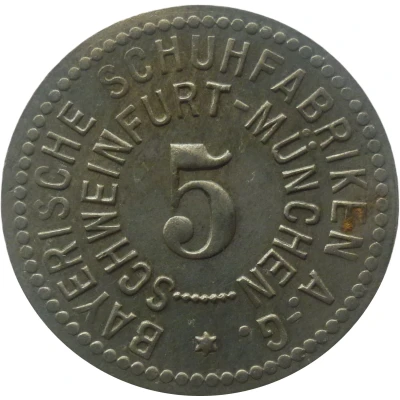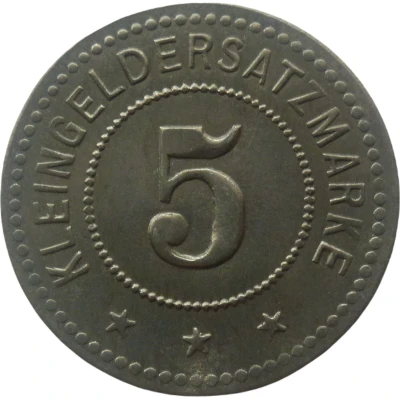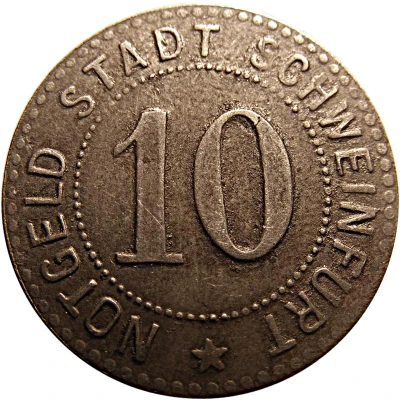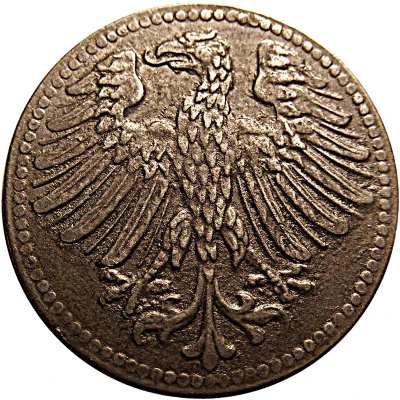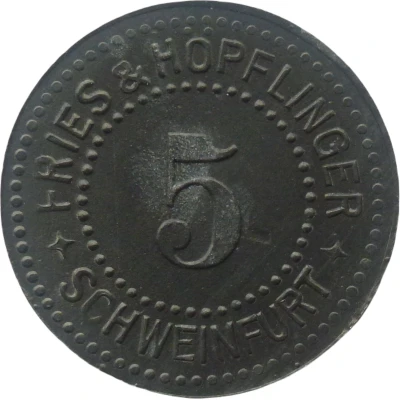
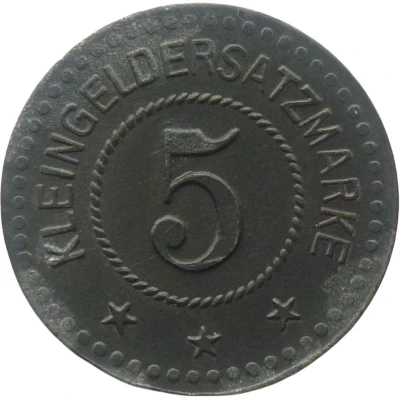

© Willem63 (CC BY-NC-SA)
5 Pfennigs - Schweinfurt (Fries and Höpflinger) ND
| Zinc | 1.7 g | 19.2 mm |
| Issuer | City of Schweinfurt (notgeld) (Federal state of Bavaria) |
|---|---|
| Type | Standard circulation coin |
| Value | 5 Pfennigs (5 Pfennige) (0.05) |
| Currency | Mark (1914-1924) |
| Composition | Zinc |
| Weight | 1.7 g |
| Diameter | 19.2 mm |
| Thickness | 1.0 mm |
| Shape | Round |
| Technique | Milled |
| Orientation | Medal alignment ↑↑ |
| Demonetized | Yes |
| Updated | 2024-10-04 |
| Numista | N#353989 |
|---|---|
| Rarity index | 97% |
Reverse
Pearl rim, legend surrounding rope circle with denomination centered
Script: Latin
Lettering:
KLEINGELDERSATZMARKE
5
★ ★ ★
Edge
Plain
Comment
Menzel: BBBFa.: Maschinenfabrik
In 1890 Wilhelm Höpflinger set up his own business with Engelbert Fries. They founded the company Fries & Höpflinger, which manufactured balls and ball bearings and sold them worldwide. Höpflinger was in charge of the technical and Fries the commercial management of the company.
Interesting fact
One interesting fact about the 5 Pfennigs - Schweinfurt (Fries and Höpflinger) ND coin is that it was issued as a form of "notgeld" (emergency money) during a time of economic crisis in Germany, specifically in the city of Schweinfurt in the state of Bavaria. Notgeld was a type of currency issued by local communities during times of economic hardship, such as inflation or wartime, when the official currency was scarce or devalued. The 5 Pfennigs coin was made of zinc and weighed 1.7 grams, which was a relatively small weight for a coin of its denomination. Despite its small size, the coin played an important role in the local economy during a time of need.
